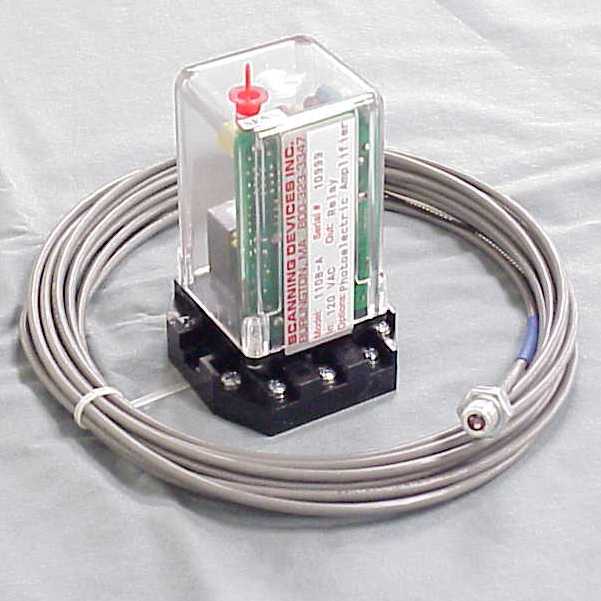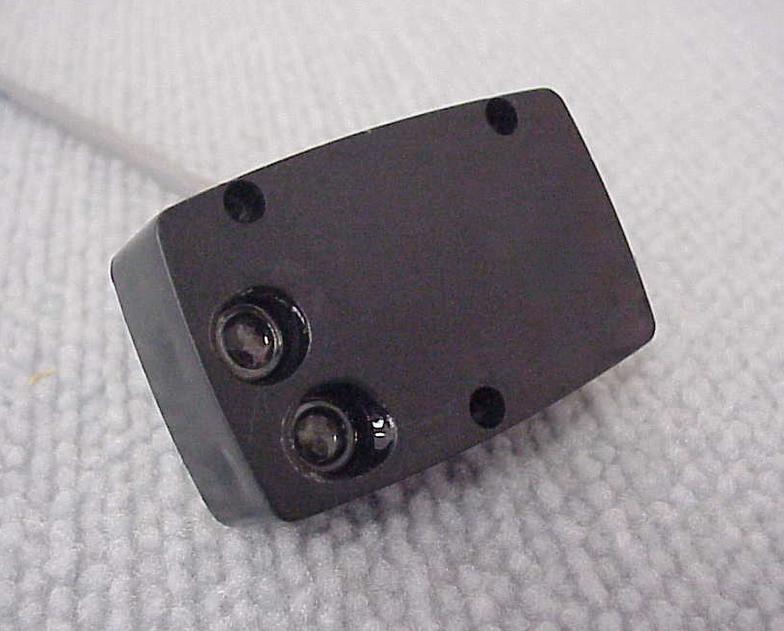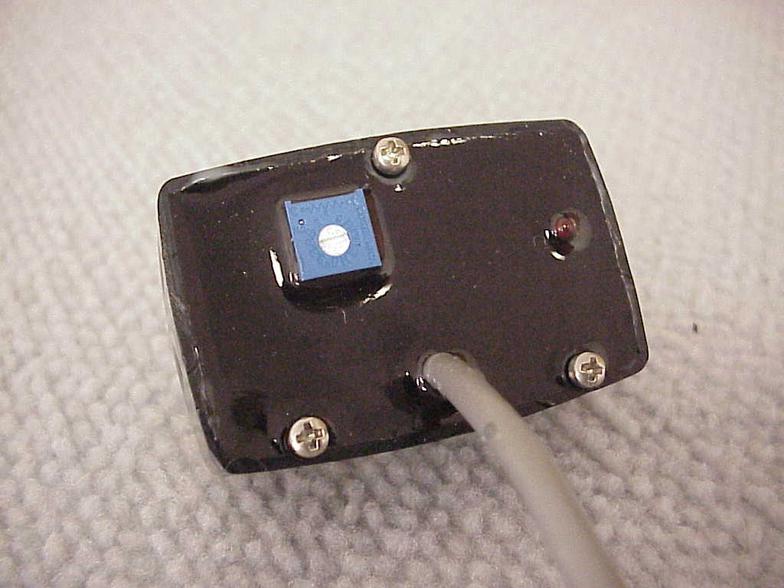..................................................................................................................................................................................................................................................
Sensors - Instruments - Controls
Spark/Arc Detection
Sensors detect the energy created before an arc occurs; the amplifier triggers a response/intervention
Applications:
Industrial Microwave Ovens, Radio Transmitters, Motors, Adhesive Processing
Benefits
Early detection can initiate measures to prevent combustion, or validate that a spark necessary for a process is present
Simple But Effective - Our arc detection system consists of one or two photoelectric sensors mounted within equipment to view the energy delivery region. These are wired to a plug-in photoelectric amplifier consisting of a power source for the photo sensors, adjustable gain amplifier stage, and output switch.
The amplifier's output changes when infrared energy impinges on the photo sensors. The output is wired to industrial oven controls to take appropriate action.
Installation Flexibility - Separate sensor and amplifier allow separation of the components by cable and installation of the amplifier away from the energy delivery area in a convenient location with other control equipment.
Numerous Models and Setup Options - Variations in input power, output switch type, fail-safe configuration. Amplifiers are available powered by 120 VAC or 24 VDC. Outputs include mechanical relays and optically coupled isolators suitable for PLC connection as well as high-speed solid-state switches. Amplifiers can be setup to energize output on spark or no spark.
Understanding Spark/Arc Detection
High electrical energy adjacent to conductive surfaces creates conditions favorable to spark production much as lightning occurs in a thunderstorm. Sparks result from a discharge of electrical energy and the resulting oxidation of the natural atmosphere to produce ozone. Energy is released in the near infrared region, invisible to the human eye, which results in the further generation of heat and light. Light is broad-spectrum white light visible to the human eye.
Sparks can produce substantial damage to products in process as energy release can lead to combustion. Electrical equipment such as microwave ovens, radio transmitters and motors are often equipped with spark detection sensors and automatic shut-down/product evacuation measures to prevent sparks from initiating combustion.
Sensors tuned to detect in the near infrared region respond to the initial energy release. When coupled with fast acting electrical circuitry, early detection can initiate measures to prevent combustion. Spark detectors are also used in adhesive processing to confirm operations that require a spark to effect curing.
110 Series Spark/Arc Detection System
NEW -130 Series Spark/Arc Detection System
Space Saving Arc Detection - Our new arc detection system is especially well suited to applications where space for electronics is limited. This new design eliminates the need for a stand-alone photoelectric amplifier and socket. The electronics are integrated into the same small enclosure that contains the dual optical sensors.
Easy Installation - With both the electronics, and dual optical sensors in a single self-contained enclosure, you simply install the 130 Series sensor head so that it can view the area of inspection. The 20' cable allows for easy wiring to your PLC.
Simple Operation - 130 Series sensors offer adjustable sensitivity and a red LED that illuminates when output is activated. Output is activated when infrared energy impinges on the photo sensors (i.e. an arc, or spark is detected in the viewing area). The dual sensors assure broad coverage of the viewing area. The electronics are enclosed in epoxy providing protection in challenging environments.
- Peak Sensitivity: 875 nanometers (near infrared)
- Typical Response Time 200 us
- Current Sink and Current Source options
- 20' cable
- 10-30 VDC
- Dimensions: 2 1/4" * 1 7/16" * 3/4"
- Temp range -20C to +70C
- 3 Mounting Holes
Socket Wiring Instructions






